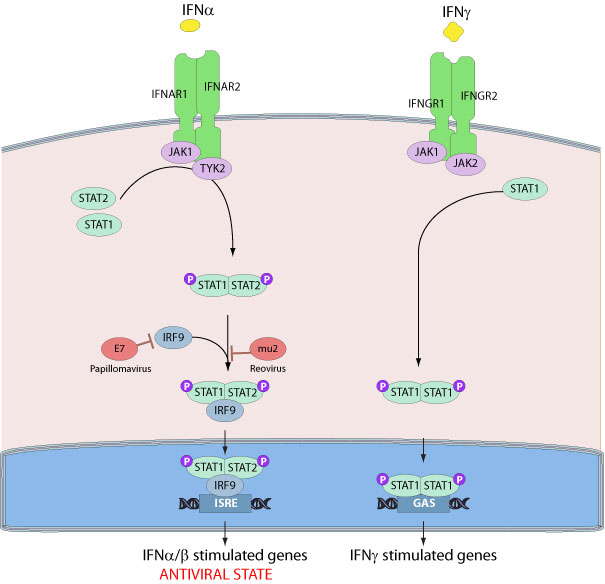Inhibition of host IRF9 by virus (kw:KW-1094)
IRF9 is a key transcriptional factor involved in the signaling pathway leading to expression of hundreds of interferon stimulated genes (ISGs). Under normal conditions, IRF9 exists in a latent form in the cytoplasm. Viral infection triggers the activation of IRF9 bound to STAT1 and STAT2 forming the ISGF3 complex. ISGF3 complex translocates to the nucleus and binds to specific regulatory DNA sequences called IFN-stimulated response elements (ISREs). ISGF3 binding to ISREs initiates the transcription of many IFN-stimulated genes (ISGs).

Several viruses involved in the evasion of the type I and III interferon pathway by inhibiting the interferon regulatory factor-9 protein. The human papillomavirus E7 oncoprotein abrogates signaling mediated by interferon-alpha. The reovirus µ2 protein induces unusual nuclear accumulation of IRF9 and represses IFN-stimulated gene (ISG) expression.
Matching UniProtKB/Swiss-Prot entries
(all links/actions below point to uniprot.org website)3 entries grouped by strain
1 entry
Reovirus type 1 (strain Lang) (T1L) (Mammalian orthoreovirus 1) reference strain
1 entry
Reovirus type 2 (strain D5/Jones) (T2J) (Mammalian orthoreovirus 2)
1 entry
